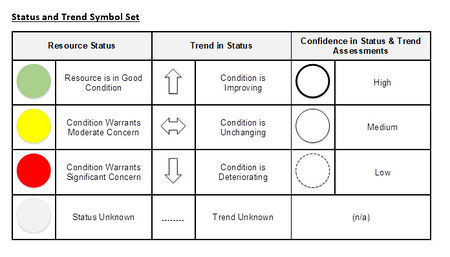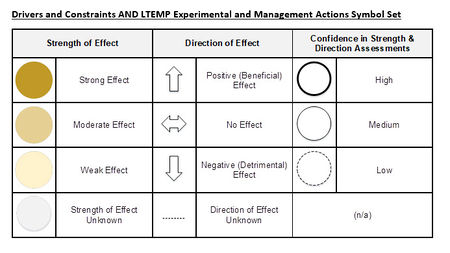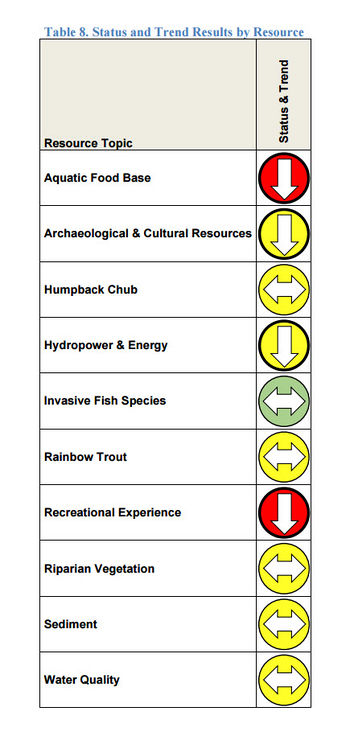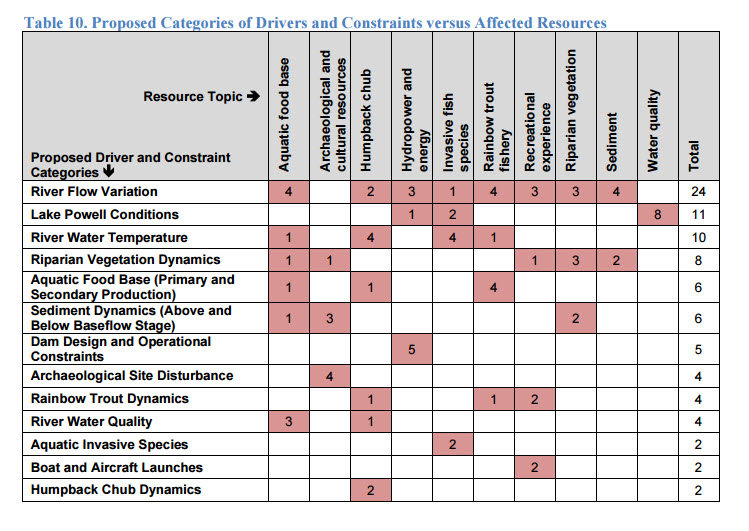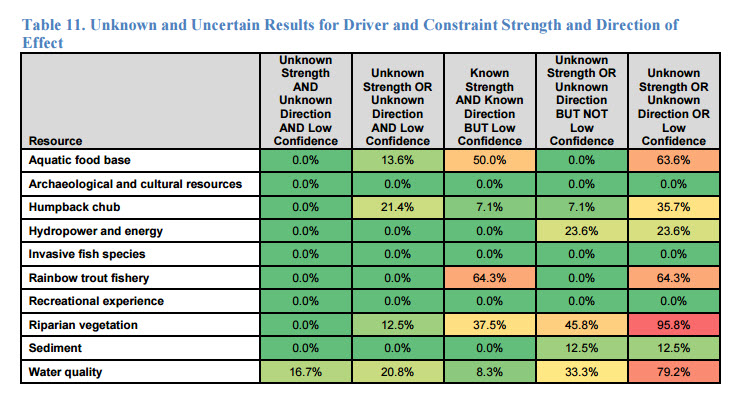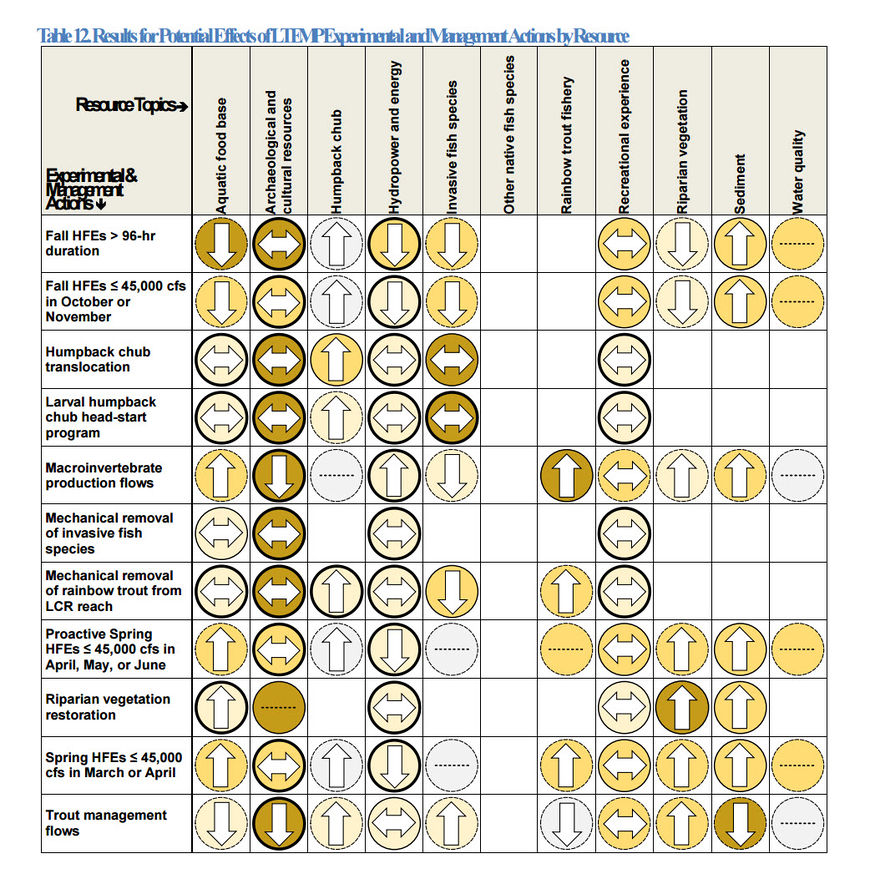Difference between revisions of "2017 Knowledge Assessment"
Cellsworth (Talk | contribs) |
Cellsworth (Talk | contribs) |
||
| Line 51: | Line 51: | ||
|class="MainPageBG" style="width:55%; border:1px solid #cef2e0; background:#f5faff; vertical-align:top; color:#000;"| | |class="MainPageBG" style="width:55%; border:1px solid #cef2e0; background:#f5faff; vertical-align:top; color:#000;"| | ||
{|width="100%" cellpadding="2" cellspacing="5" style="vertical-align:top; background:#f5faff;" | {|width="100%" cellpadding="2" cellspacing="5" style="vertical-align:top; background:#f5faff;" | ||
| − | ! <h2 style="margin:0; background:#cedff2; font-size:120%; font-weight:bold; border:1px solid #a3bfb1; text-align:left; color:#000; padding:0.2em 0.4em;"> | + | ! <h2 style="margin:0; background:#cedff2; font-size:120%; font-weight:bold; border:1px solid #a3bfb1; text-align:left; color:#000; padding:0.2em 0.4em;">Report Summary</h2> |
|} | |} | ||
| + | |||
| + | The FY 2017 KA addressed three broad spheres of knowledge for each of these eleven focal | ||
| + | resource topics: | ||
| + | *'''Status and Trend:''' How closely does the condition of the resource currently approach management objectives and, if the current condition shows any trend, is this a trend toward or away from management objectives? | ||
| + | *'''Drivers and Constraints:''' What environmental factors, including human actions and basic dam operations, most strongly affect resource status and trend, how strong are these effects, and do these effects constrain or drive resource condition toward or away from management objectives? | ||
| + | *'''LTEMP Experimental and Management Actions:''' Which LTEMP experimental and management actions are expected to affect resource condition and trend, how strong are these effects expected to be, and are these effects expected to drive resource condition toward or away from management objectives? | ||
| + | |||
| + | More specifically, the FY 2017 KA posed three sets of core questions for each of the eleven focal resource topics: <br> | ||
| + | 1) Status and Trend | ||
| + | *What is the present understanding of the status of the condition(s) addressed by the topic? | ||
| + | *What is the present understanding of the direction of any trend(s) in these conditions? | ||
| + | *How certain or uncertain is this understanding? | ||
| + | 2) Drivers and Constraints | ||
| + | *What is the present understanding of the drivers and constraints that most significantly shape the status and trends in these conditions? | ||
| + | *What is the present understanding of the strength and direction of these effects? | ||
| + | *How certain or uncertain is this understanding? | ||
| + | 3) Effects of Experimental and Management Actions | ||
| + | *What is the present understanding of the ways in which each type of LTEMP experimental or management action could affect the status and trends in these conditions? | ||
| + | *What is the present understanding of the likely strength and direction of these effects? | ||
| + | *How certain or uncertain is this understanding? | ||
| + | |||
| + | The last of these three sets of questions focused on eleven specific experimental management actions identified in the LTEMP FEIS and ROD as features of the Preferred Alternative: | ||
| + | *Fall High-Flow Experiments [HFEs] > 96‐hr duration but ≤ 45,000 cfs in October or November | ||
| + | *Fall HFEs < 96‐hr duration but ≤ 45,000 cfs in October or November | ||
| + | *Humpback chub translocation | ||
| + | *Larval humpback chub head-start program | ||
| + | *Macroinvertebrate production flows | ||
| + | *Mechanical removal of invasive fish species | ||
| + | *Mechanical removal of rainbow trout from the Little Colorado River [LCR] reach | ||
| + | *Proactive Spring HFEs ≤ 45,000 cfs in April, May, or June | ||
| + | *Riparian vegetation restoration | ||
| + | *Spring HFEs ≤ 45,000 cfs in March or April | ||
| + | *Trout management flows | ||
| + | |||
| + | The Preferred Alternative in the LTEMP FEIS and ROD also includes summer low flow | ||
| + | experiments. However, these will not be attempted until during the second 10 years of | ||
=='''Status and Trends''' == | =='''Status and Trends''' == | ||
| − | + | The experts for the other ten resources assessed the current status of seven overall as | |
| − | + | meeting the criteria for “Moderate Concern,” and assessed two, aquatic food base and | |
| − | + | recreational experience, as meeting the criteria for “Significant Concern” overall. Only one | |
| + | resource, invasive fish species (nonnative invasive species), received an overall rating of “Good | ||
| + | Condition.” Since this last resource topic focuses on a threat, its status indicates that, nonnatives, | ||
| + | invasive fish species overall currently pose only a limited threat to other species in the | ||
| + | system. However, the expert teams consider six of the ten assessed resources currently to be | ||
| + | experiencing either no net trend in status, and four – aquatic food base, archaeological and | ||
| + | cultural resources, hydropower and energy, and the recreational experience – to be experiencing | ||
| + | deteriorating trends in status. The experts did not identify any resource as currently experiencing | ||
| + | a net improving trend in status. Tables outlining status and trends for each resource characteristic can be found [[Media:GCDAMP FY 2017 Knowledge Assessment Status & Trend Summary Results Final 2017-04-24.pdf | '''here''']]. | ||
| + | |||
[[File:StatusTrendResource.jpg|center|350px]] | [[File:StatusTrendResource.jpg|center|350px]] | ||
=='''Drivers and Constraints''' == | =='''Drivers and Constraints''' == | ||
| − | + | The assessment of drivers and constraints identified numerous factors that influence the status of | |
| − | + | the ten assessed focal resources. These factors fall into thirteen proposed overarching categories: | |
| − | + | aquatic food base dynamics (primary and secondary production), aquatic invasive species, | |
| − | + | archaeological site disturbance, boat and aircraft launches, dam design and operational | |
| − | + | constraints, humpback chub dynamics, Lake Powell conditions, rainbow trout dynamics, riparian | |
| − | + | vegetation dynamics, river flow variation, river water quality, river water temperature, and | |
| − | + | sediment dynamics (above and below baseflow stage). | |
| − | + | ||
| − | + | ||
| − | + | ||
| − | + | ||
| − | + | ||
| − | + | ||
| − | + | ||
| − | + | ||
| − | + | ||
| − | + | ||
| − | + | ||
| − | + | ||
| − | + | ||
| − | + | ||
| − | + | ||
[[File:DC Resource.jpg|center|900px]] | [[File:DC Resource.jpg|center|900px]] | ||
| Line 88: | Line 118: | ||
=='''Effects of LTEMP Experimental and Management Actions''' == | =='''Effects of LTEMP Experimental and Management Actions''' == | ||
| − | |||
| − | |||
| − | |||
| − | |||
| − | |||
The results in Table 12 indicate that the expert teams expect the net effects of the various | The results in Table 12 indicate that the expert teams expect the net effects of the various | ||
LTEMP experimental and management actions (across all resource characteristics for the ten | LTEMP experimental and management actions (across all resource characteristics for the ten | ||
| Line 106: | Line 131: | ||
[[File:EMA Resource.jpg|center|870px]] | [[File:EMA Resource.jpg|center|870px]] | ||
| + | |||
| + | The assessments of status and trend, drivers and constraints, and the potential effects of LTEMP | ||
| + | experimental and management actions for the ten assessed resources also identified numerous | ||
| + | gaps and areas of uncertainty in critical knowledge. The resources with the highest frequencies | ||
| + | of such gaps and uncertainties were (in descending order of frequency): water quality, riparian | ||
| + | vegetation, the rainbow trout fishery, the aquatic food base, humpback chub, invasive fish | ||
| + | species, and sediment. The raw spreadsheet entries indicate that the expert teams reported these | ||
| + | gaps and uncertainties because of difficulties with unclear or undefined management objectives | ||
| + | for individual resource characteristics; temporal or spatial gaps in the available data; insufficient | ||
| + | numbers of suitable data points; or high temporal or spatial variability in the available data. | ||
| + | These findings highlight topics that could benefit from improved management objectives, | ||
| + | continuing and/or improved monitoring, and/or research to address critical gaps and | ||
| + | uncertainties. | ||
| + | |||
| + | The concluding recommendations identify needs and opportunities for the TWG and GCMRC to | ||
| + | improve the assessment methods and their implementation under five headings: What to assess | ||
| + | and when, assessment structure and process, the spreadsheet tool, the scorecard display system, | ||
| + | and the default method used to average together the findings across multiple lines of evidence for | ||
| + | each resource topic. | ||
=='''Results Summary''' == | =='''Results Summary''' == | ||
| Line 159: | Line 203: | ||
|style="color:#000;"| | |style="color:#000;"| | ||
| − | *[[Media:GCDAMP FY 2017 Knowledge Assessment Status & Trend Summary Results Final 2017-04-24.pdf | Status & Trends ]] | + | *[[Media:GCDAMP FY 2017 Knowledge Assessment Status & Trend Summary Results Final 2017-04-24.pdf | Status & Trends Tables]] |
| − | *[[Media:GCDAMP FY 2017 Knowledge Assessment Drivers & Constraints Summary Final 2017-04-24.pdf| Drivers & Constraints]] | + | *[[Media:GCDAMP FY 2017 Knowledge Assessment Drivers & Constraints Summary Final 2017-04-24.pdf| Drivers & Constraints Tables]] |
| − | *[[Media:GCDAMP FY 2017 Knowledge Assessment LTEMP E&M Actions Summary Results Final 2017-04-24.pdf| Effects of LTEMP Experimental and Management Actions]] | + | *[[Media:GCDAMP FY 2017 Knowledge Assessment LTEMP E&M Actions Summary Results Final 2017-04-24.pdf| Effects of LTEMP Experimental and Management Actions Tables]] |
|- | |- | ||
Revision as of 14:43, 3 May 2017
|
|
2017 Knowledge Assessment (KA)The FY 2017 KA had three objectives:
The resulting information provides crucial guidance for work planning and budgeting. The TWG also conceived the FY 2017 KA as a trial with two additional objectives:
The present (FY 2017) knowledge assessment is timed to coincide with and inform the Annual Reporting process and development of the next GCDAMP Triennial Work Plan for FY 2018-2020. This knowledge assessment is testing a methodology for better organizing, displaying, and communicating its findings, potentially to carry forward to guide future knowledge assessments as well. [1] |
| -- |
-- |
-- |
|---|
The FY 2017 KA addressed three broad spheres of knowledge for each of these eleven focal resource topics:
More specifically, the FY 2017 KA posed three sets of core questions for each of the eleven focal resource topics:
2) Drivers and Constraints
3) Effects of Experimental and Management Actions
The last of these three sets of questions focused on eleven specific experimental management actions identified in the LTEMP FEIS and ROD as features of the Preferred Alternative:
The Preferred Alternative in the LTEMP FEIS and ROD also includes summer low flow experiments. However, these will not be attempted until during the second 10 years of Status and TrendsThe experts for the other ten resources assessed the current status of seven overall as meeting the criteria for “Moderate Concern,” and assessed two, aquatic food base and recreational experience, as meeting the criteria for “Significant Concern” overall. Only one resource, invasive fish species (nonnative invasive species), received an overall rating of “Good Condition.” Since this last resource topic focuses on a threat, its status indicates that, nonnatives, invasive fish species overall currently pose only a limited threat to other species in the system. However, the expert teams consider six of the ten assessed resources currently to be experiencing either no net trend in status, and four – aquatic food base, archaeological and cultural resources, hydropower and energy, and the recreational experience – to be experiencing deteriorating trends in status. The experts did not identify any resource as currently experiencing a net improving trend in status. Tables outlining status and trends for each resource characteristic can be found here. Drivers and ConstraintsThe assessment of drivers and constraints identified numerous factors that influence the status of the ten assessed focal resources. These factors fall into thirteen proposed overarching categories: aquatic food base dynamics (primary and secondary production), aquatic invasive species, archaeological site disturbance, boat and aircraft launches, dam design and operational constraints, humpback chub dynamics, Lake Powell conditions, rainbow trout dynamics, riparian vegetation dynamics, river flow variation, river water quality, river water temperature, and sediment dynamics (above and below baseflow stage). Effects of LTEMP Experimental and Management ActionsThe results in Table 12 indicate that the expert teams expect the net effects of the various LTEMP experimental and management actions (across all resource characteristics for the ten resources) to be a “mixed bag.” Each action is expected to have a mixture of net positive to negative and net strong to weak effects on each of the ten resources, on average across all the individual resource characteristics for each resource. No single action is expected to consistently provide a net benefit to all resources. Similarly, with the exception of recreational experience, no single resource is expected to be affected consistently by all actions. In the case of recreational experience, the results indicate that the expert team expects the net effects of all actions on all resource characteristics to be neutral (neither positive nor negative). However, the tables in Appendix D show that these average effects mask a range of variation in effects across individual resource characteristics. The assessments of status and trend, drivers and constraints, and the potential effects of LTEMP experimental and management actions for the ten assessed resources also identified numerous gaps and areas of uncertainty in critical knowledge. The resources with the highest frequencies of such gaps and uncertainties were (in descending order of frequency): water quality, riparian vegetation, the rainbow trout fishery, the aquatic food base, humpback chub, invasive fish species, and sediment. The raw spreadsheet entries indicate that the expert teams reported these gaps and uncertainties because of difficulties with unclear or undefined management objectives for individual resource characteristics; temporal or spatial gaps in the available data; insufficient numbers of suitable data points; or high temporal or spatial variability in the available data. These findings highlight topics that could benefit from improved management objectives, continuing and/or improved monitoring, and/or research to address critical gaps and uncertainties. The concluding recommendations identify needs and opportunities for the TWG and GCMRC to improve the assessment methods and their implementation under five headings: What to assess and when, assessment structure and process, the spreadsheet tool, the scorecard display system, and the default method used to average together the findings across multiple lines of evidence for each resource topic. Results SummaryThe results of the FY 2017 KA indicate that the expert teams considered most of the resources to have current statuses of “Moderate Concern,” with two – aquatic food base and recreational experience – having current statuses of “Significant Concern” and only one – invasive fish species (nonnative invasive species) – having a current status of “Good Condition.” As noted above, the “Good” rating for the current status of invasive fish species refers to the level of threat posed by these species. The results for this one resource indicate that, overall across all invasive fish species of interest, the net threat currently posed by these species is not a matter of concern. At the same time, however, the expert teams consider most of the resources currently to be experiencing either no trend or a deteriorating trend in status. No resource was recognized as experiencing an improving trend. The four resources identified as experiencing deteriorating trends are the aquatic food base, archaeological and cultural resources, hydropower and energy, and the recreational experience. Recommendations
|
|
